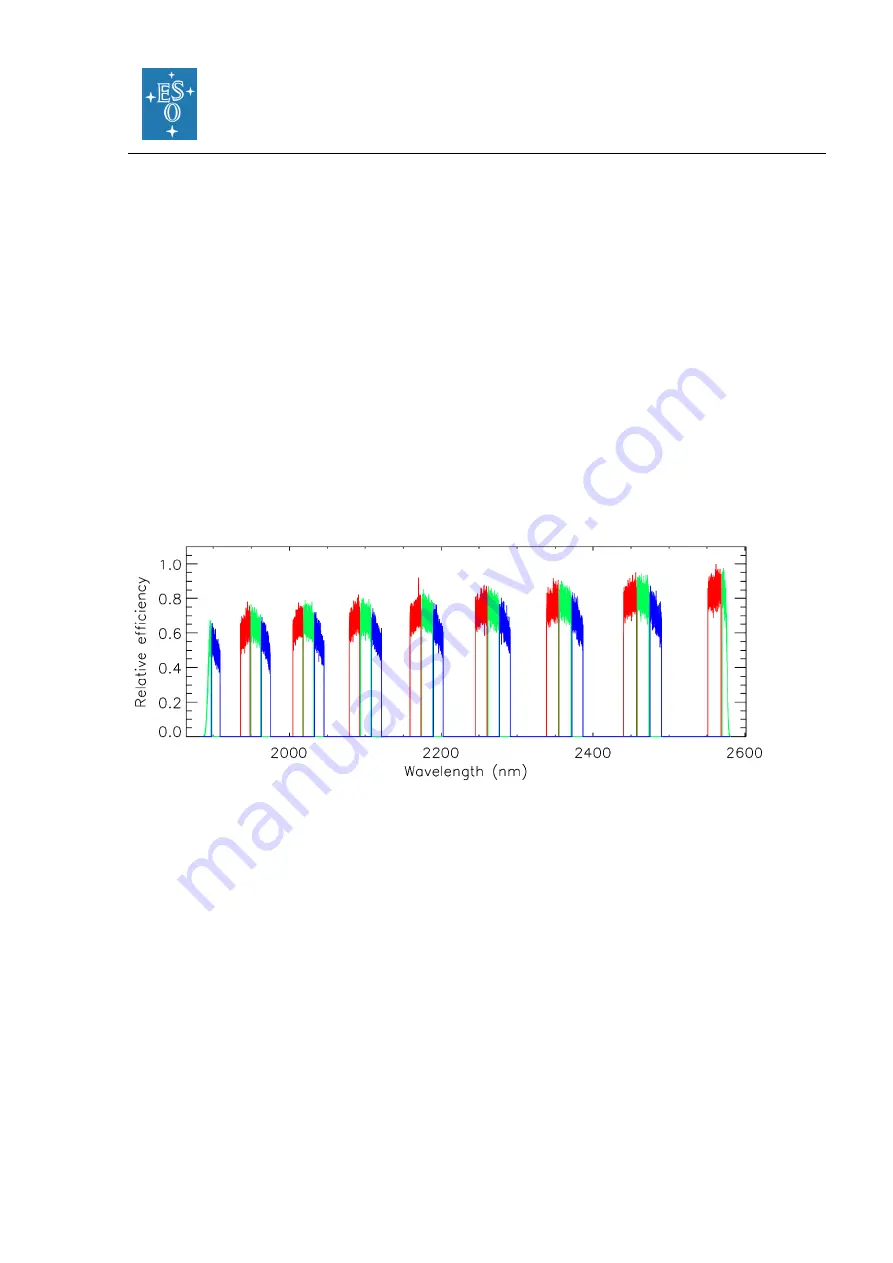
User Manual
Doc. Number: ESO-323064
Doc. Version: 2
Released on:
Page:
37 of 82
Document Classification: Public
commissioning run, under excellent
conditions (0.5” seeing)
and a slit of 0.2
”, reasonable
guiding was possible with stars of H=14.5 and 13.5 in NoAO and NGS mode, respectively.
NOTE: Observations in P108 are offered only if the target can be used also as SVGS
(i.e., no off-target guiding is allowed)
4.4.3 Wavelength settings
The introduction of the cross-disperser increases the single-exposure wavelength coverage
of CRIRES by about a factor of 10 compared to oCRIRES, but CRIRES is still incapable of
covering a single photometric band in a single exposure without any gaps. By varying the
echelle angle and choice of cross-disperser grating, CRIRES is able to fully cover each
YJHKLM photometric band (e.g., see Figure 26). The number of exposures depends on the
particular band, but fewer exposures are required to cover the shorter wavelength regions.
Additional exposures are necessary to cover detector gaps. Similar to the standard settings
offered with oCRIRES, the upgraded CRIRES provides a list of fixed wavelength settings
to the users. All settings are handled by the Data Reduction Software (DRS). No free
settings are offered.
Figure 26: A 1D extraction of the flat-field image indicating the spectral coverage achieved
for a single echelle setting, obtained in a single exposure (K-band, echelle angle=65.5). The
three different detectors are colour-coded differently.
To reduce the total number of fixed settings offered by CRIRES, the number of settings per
photometric band were optimized to provide the best overall throughput per band (in
individual and combined images), with the least number of echelle settings needed to
provide for gap-free coverage. This strategy reduces the total number of settings that need
to be offered to the user, which helps reducing operational overhead and time needed for
calibration. In addition, it also removes the need for additional interlaced settings, which
were offered with oCRIRES to fill in detector gaps.
One of the goals of the CRIRES upgrade is to achieve a minimum of 80% coverage of the
photometric band in the region of operation. In most cases, the expected coverage is much
wider. However, as the height of some orders may not be fully covered, the spectral
coverage for point sources (at the centre of the slit) differs from the spectral coverage
achieved with extended sources that require full slit illumination. Table 3 provides a list of
the achieved coverage (using multiple exposures) for each photometric band.
















































